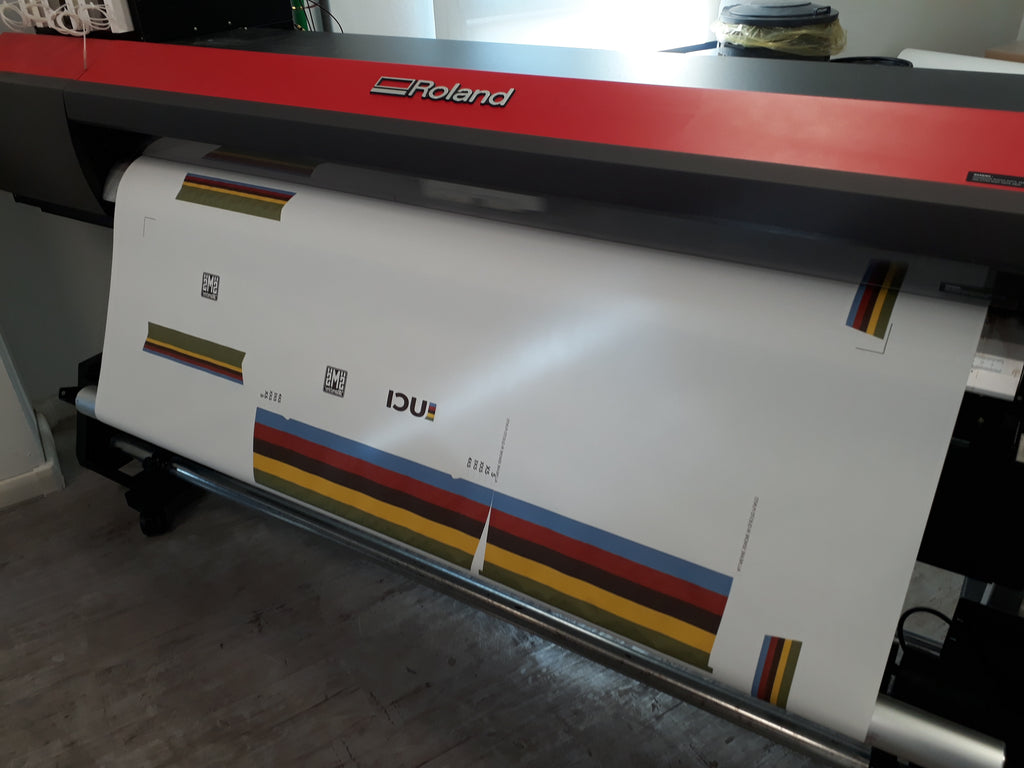QUALITY CYCLING CLOTHING SINCE 1996 - THE UK'S FIRST RETRO MANUFACTURER
QUALITY CYCLING CLOTHING SINCE 1996 - THE UK'S FIRST RETRO MANUFACTURER
RETRO APPAREL
COLLECTIONS
Cycling Clothing
ACCESSORIES
How Is My Retro Cycling Jersey Made?
September 13, 2022 3 min read

We often get asked questions by our customers via email which can sometimes result in a fairly lengthy reply – although short replies are also available!
Once customers new to cycling get the bug, it's always great to see their thirst for new knowledge - asking questions of us. So this blog article is born out of an email from one of our customers to explain how a cycle jersey is made.
This article is based on information kindly provided by Santini.
Designing your retro jersey
As you are looking at the Prendas website, chances are you will have found us via the internet and we rank very well for our unique retro cycling jerseys. We try hard to offer garments that others don't – after all we don't want to all look the same now do we?
The design process for our retro jerseys generally starts with an idea sparked from trawling through our extensive archive of old books, magazines and photographs. We then carefully choose the jersey design that we want to bring back to life, with the help of Santini, a design for the jersey is then produced showing the exact layout of the panels, the logos, zip choice, cloth badges, labels etc
After a few iterations, everything is approved and the order can go into production.
Digital Print of the design
Since the late 1980's, jerseys have been primarily made from a polyester mix with the process of applying the colour to the white polyester fabric called dye-sublimation printing.
As you would expect, different manufacturers use different printing methods dependant on the quantities you are talking about. For example, if you are getting a very short run produced (small club custom jerseys), then a digital print would be used whereas if you are getting hundreds of the exact same jersey produced (like Prendas Ciclismo do) the older and more accurate method of offset printing would be preferable.
The traditional offset printing produces a higher quality print as it is far more stable because it uses single solid inks (Pantones) to produce colour, but unfortunately it only becomes cost-effective at high volume.
Whereas the Digital method uses plotters (photographed below) that have to mix colours to produce the different colours which can sometimes lead to differences in colour unless they are maintained and calibrated correctly.
Santini use specially manufactured, environment-friendly heat activated inks/dyes that are then fixed by heat and pressure into the polyester. The images from the design process are printed on a heat-resistant transfer paper and as a mirror image of the final design. The printed sheets of paper are dried and ready for sublimation.

Cutting & Sublimation Process
The fabric (for example SITIP Microsense) is cut into the various panels (you can see the cutting pattern in the La Casera design above) before the printed transfer papers are then placed on top of it and when pressure and heat are then applied using a heat press - typically 180-200°C for 35-60 seconds.
The physical process of sublimation is when the printed (solid) ink is sublimated into a gas state that then binds with the fibres of the fabric creating a virtually inseparable bond. That inseparability is relative to heat, so if you took the finished print and subjected it to a temperature source - water or gas - equivalent to the original sub process the ink could sublimate again destroying the design. In short don't iron your cycle jerseys!

The sublimation print process is complete when the paper is removed. Sublimation permanently fixes the logos/colours/graphics to the polyester fabric and the print cannot be scratched or washed out. It becomes part of the fabric.
Sewing your retro jersey together
The skilled hands of Santini's vastly experienced seamstresses then turn the various panels of fabrics into a great-looking retro jersey.

Quality Control and Dispatch
After the sewing is done every product is subject to careful inspection. After that, it is carefully packed and ready for shipment to Prendas in the UK.

Santini Video: The making of a cycle jersey
Here is a short (2:08) video that Santini made explaining what I have described above in a quirky video/time lapse format.
Also in News and articles from Prendas Ciclismo

Prendas' Best-Selling Caps of 2024
January 21, 2025 4 min read
With 2024 in the books, we're looking back at your favourite caps of the year. From cult classic movies to the jungle with a whole lot of Italian flair, check out our best-sellers and grab a new cap!

Vas-y Barry! Hoban wins Ghent-Wevelgem for Gan Mercier Hutchinson
May 15, 2024 8 min read
In an extract from his autobiography, Vas-y Barry, the only British winner of Ghent-Wevelgem, Barry Hoban tells how he won the cobbled classic in 1974, beating Eddy Merckx and the cream of Belgian cycling.

Our Best Selling Caps of 2023
January 15, 2024 4 min read
We know caps here at Prendas Ciclismo, and we know that you love all the styles we have on offer. So every year, we look back at our best-selling cycling caps for the previous year for you to discover a few new styles. Is your favourite cycling cap featured on our list? Read on and see!
Subscribe
Sign up to get the latest on sales, new releases and more …

